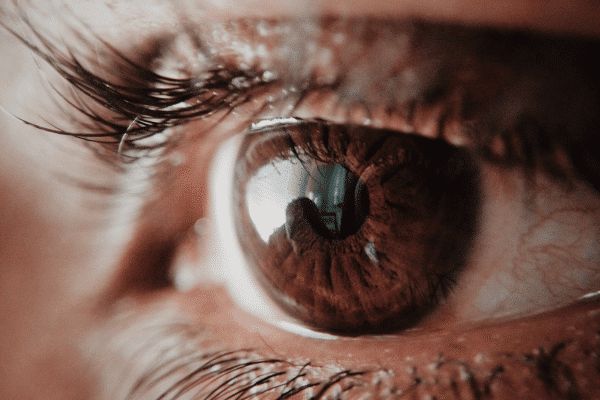Corneal injury is one of the more common reasons for visiting an ophthalmologist. Causes may include. An ill-fitting lens, a scratch or a foreign body under the eyelid. The damage usually heals within a few days, but you should always go to an ophthalmologist in such a situation to see the eye carefully and decide on a course of treatment.
The cornea is the front, convex and transparent part of the eye, performing a very important function in the process of vision. It is the first optical element of the eye, allowing light to pass through it and transmit it to the subsequent structures of the eye, and for this it is necessary to have its transparency and correct curvature.
The cornea is characterized by rich innervation, so even a gentle touch is felt as an unpleasant stimulus. The multitude of nerve endings thus makes any injury - even small and superficial ones - very painful.
Mechanical corneal injury and its causes
Mechanical injuries to the cornea are the most common type of damage to this part of the eye. Mechanical trauma to the cornea most often results in damage - loss of its epithelium - the so-called "corneal epithelium". corneal erosion.
Causes of the problem may include:
- Improperly fitting lenses causing corneal abrasion,
- Scratching the eye by an animal,
- foreign body under the eyelid,
- Scratching the eye with a fingernail,
- A very advanced form of dry eye,
- abnormally growing eyelashes.
Corneal damage often occurs in children - for example, during play, sports or on vacation. Another reason could be, for example, a traffic accident.
Regardless of the circumstances under which the corneal erosion occurred and whether the problem affects an adult or a child, it is always necessary to see an ophthalmologist, who will select a course of treatment depending on the severity of the injury.
Lack of specialized consultation can have unpleasant consequences for the injured party.
Symptoms and effects of damage to the cornea of the eye
As already mentioned, corneal erosion causes severe pain. Patients also have the sensation of a foreign body in the eye. The injury results in tearing, photophobia and eyelid spasm. The pain becomes more intense when the eyeball moves, as the exposed nerve endings are irritated by the moving eyelid.
While most injuries heal within a few days without usually causing complications, some - especially deep corneal injuries - can become the cause of permanent corneal opacification and scarring, and thus impair visual acuity.
A visit to an ophthalmologist is therefore necessary to implement appropriate treatment and avoid unpleasant, permanent consequences of the injury.
If, despite the treatment, the patient continues to experience discomfort and complain of vision deterioration, the doctor may suggest a laser treatment to undo the effects of corneal damage to the eye.
Corneal erosion - treatment
Reconstruction of the eye's cornea - unless there is an infection - usually takes approx. 3 days. The healing process can be prolonged in people with diabetes and dry eye syndrome. To ensure that corneal regeneration proceeds properly and the patient does not suffer, the doctor prescribes appropriate ointments or antibiotic eye drops to prevent infection.
If corneal damage has occurred due to the presence of a foreign body under the eyelid, it is necessary to remove it. Corneal abrasions usually heal without complications. Unfortunately, if an infection occurs - this often happens after a scratch from a cat, for example - corneal clouding and visual acuity can result. With deep injuries, surgery and suturing of the wound is sometimes necessary.
The aforementioned post-traumatic complication can be corneal scarring, which also interferes with vision and requires treatment. Fortunately, thanks to the development of ophthalmology, the problem can be effectively solved today.
Currently, the safest and most effective method of eliminating corneal scars is laser removal . With the use of modern laser technology, it is possible to successfully remove various types of corneal scars - both central - impairing vision and peripheral.
Patient qualification for such a procedure is always based on an ophthalmological examination. In particular, corneal topography (corneal map) and evaluation of the cornea in a special apparatus - a slit lamp - are recommended. This examination is necessary in many cases - especially before performing laser treatments on the cornea. The procedure in this case involves creating a map of the cornea to pick up any post-traumatic abnormalities and deformities. This allows them to be accurately located and safely removed.
Although corneal damage is associated with a lot of pain and stress, when going to an ophthalmologist, it is always advisable to consciously choose a specialist and an office that will allow modern diagnosis and treatment.

